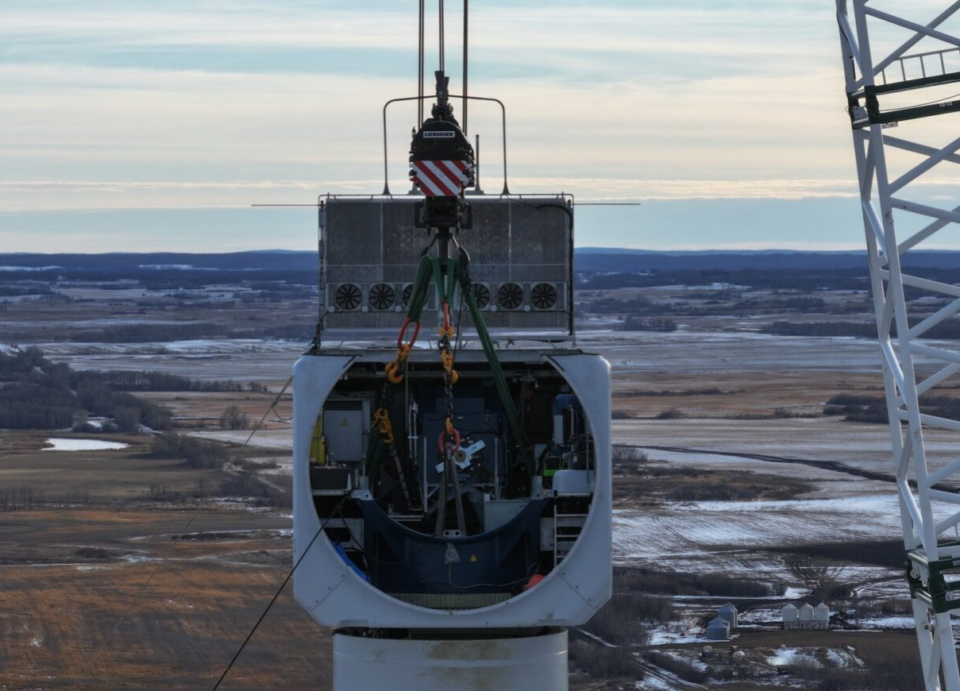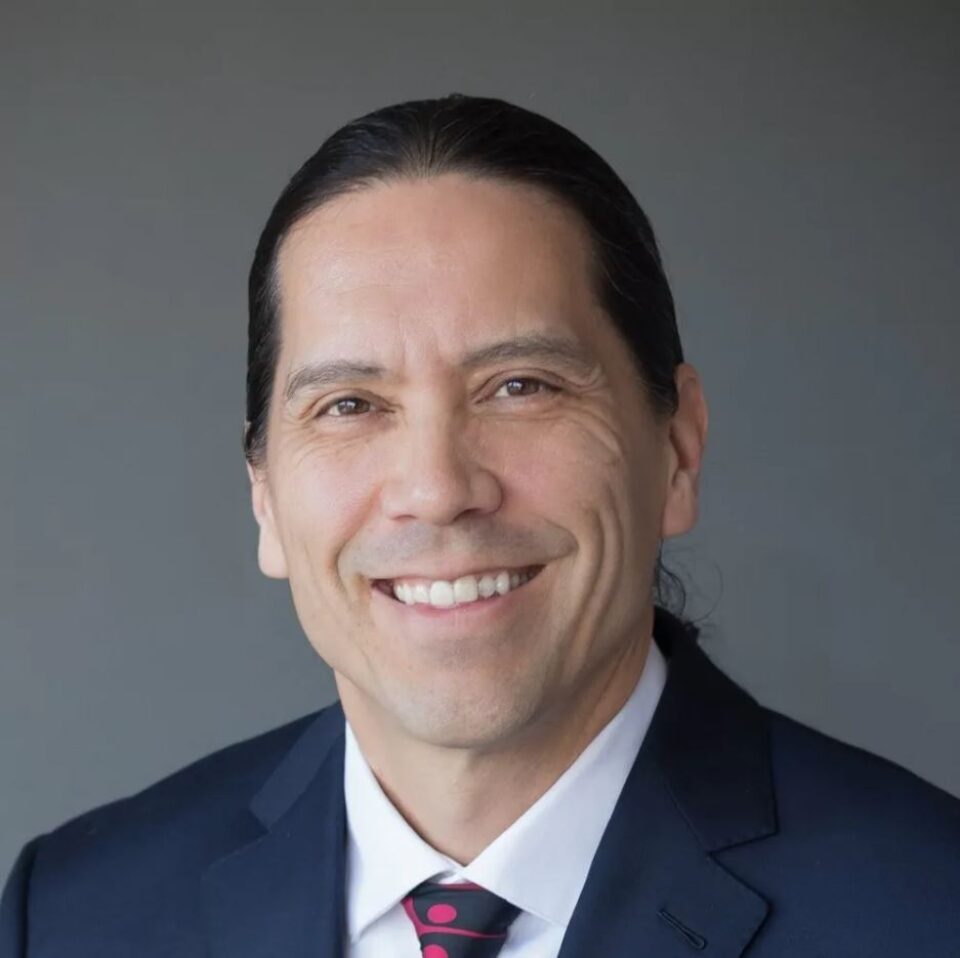In conversation with Chief Sharleen Gale, Fort Nelson First Nation; Chair, First Nations Major Project Coalition
CIB helping Indigenous communities tackle infrastructure challenges
Indigenous Equity Initiative added to suite of loans and equity available for projects
Nova Scotia First Nations first in Canada to obtain equity through CIB initiative
New program gives communities ‘a seat at the table’
Atlantic Economic Council: Investment opportunities for transformational change in Atlantic Canada’s economy
The CIB provided financial support to the Atlantic Economic Council (AEC) to produce a report on the potential for new infrastructure projects to support sustainable growth in Atlantic Canada. AEC reviewed three sectors that will be critical to the future of the region’s economy – hydrogen and clean fuel projects, critical minerals, and trade and transportation. Factors driving the need for investment in Atlantic Canada in these sectors include the transition to net-zero emissions, a rising population, shifting global trade patterns and climate change adaptation. These trends are significant given the region’s traditional reliance on fossil fuels, previously stagnant population growth, strategic location on major trading routes and need for powerful climate adaptation solutions.
According to the report, the right mix of public and private investment along with government policy will play an important role in ensuring infrastructure projects move ahead while facing challenges like construction labour shortages, access to capital, high borrowing costs and global demand uncertainties. The region needs to leverage its strengths including resource availability and geographic location to take advantage of global economic opportunities. It advocates that governments and private sector should work together to provide financial support for the three opportunity sectors.
CUTRIC: Non-Traditional Modes of Transportation Report published by the Canadian Urban Transit Research & Innovation Consortium (CUTRIC)
Canada is facing a growing demand for efficient and sustainable transportation systems. With increasing congestion in cities across the country, exploring alternative transit options from aerial transit to electric ferries will be critical to solving Canada’s transportation challenges. These nontraditional forms of transit can offer faster, cleaner and more accessible mobility solutions for urban and rural areas.
The Canadian Urban Transit Research & Innovation Consortium (CUTRIC) conducted an in-depth study of non-traditional modes of transportation, such as aerial transit systems, shared micro-mobility, ferries, on-demand transit and autonomous shuttles. The study outlines the use-case for each mode, demonstrating how when deployed as part of an integrated transit network, these modes offer great opportunity to enhance transit performance and improve rider experience. It identifies advantages and disadvantages associated with new mobility technologies, implementation considerations, infrastructure requirements and potential funding, financing and revenue-generating models associated with each mode of mobility.
BUDGET 2024
The federal government’s 2024 budget proposed a $5 billion Indigenous Loan Guarantee Program to unlock access to capital for Indigenous communities, creating economic opportunities and supporting their economic development priorities. That follows the CIB’s 2023 launch of the Indigenous Equity Initiative (IEI). Stemming from Budget 2023, the initiative enables loans to be provided to Indigenous communities to support them in purchasing equity stakes in infrastructure projects in which the CIB is also investing. The first loan under the program is $18 million to Wskijnu’k Mtmo’taqnuow Agency Ltd. (WMA), which represents Nova Scotia’s 13 Mi’kmaw First Nations, to purchase equity stakes in Atlantic Canada’s largest energy storage project.
Budget 2024 also highlighted the CIB’s launching of its new Infrastructure for Housing Initiative, allocating at least $500 million in biofuels production and investments such as the Oneida Battery Storage and Bekevar Wind Power Project. The housing initiative will provide municipalities with the tools they need to build more homes and grow by supporting enabling infrastructure such as water, wastewater, transit and district energy. The first investment commitment under IHI committed up to $140 million in financing for new and enhanced water and wastewater infrastructure in five communities in Manitoba, including the City of Brandon. The project will support cleaner water and better wastewater treatment, which will provide the enabling infrastructure to support an estimated 15,000 new housing units.
COMMUNITY OF CIB:
Meet Bill Lomax, President and CEO of the First Nations Bank of Canada
My role at FNBC is easily the best job I’ve ever had. I’m excited to get up in the morning and lead an amazing team who are dedicated to bringing innovative financial services to Indigenous communities. We handle the financial part of Nation Building.
I grew up in Terrace, B.C., until I was 15, when I moved to Vancouver with my mom. I spent some time finding my career path. I did undergraduate work in economics and Japanese before moving into completing law at UBC. However, I quickly realized that I was more interested in finance and investments. So, I decided to pursue an MBA and was lucky enough to get into Columbia Business School in New York. From there, I started working on Wall Street.
As a kid, I had no idea jobs like mine even existed. FNBC operates on a for-profit basis, but our mission is our driving force. I love that we are enabling Indigenous communities to aim high and build stronger communities by financing infrastructure and community-based projects. It’s a wonderful feeling to witness all the great projects we’ve contributed to across the country. Our partnership with the CIB will further enable the Nations we work with to achieve their goals.
The loan product we developed with the CIB came out of a project we worked on jointly. We realized our objectives of delivering financing to Indigenous communities were closely aligned. By working together, we could provide more opportunities at a faster pace for Indigenous communities.
The FNBC/CIB Indigenous Land Development Program will lower the cost of capital for Indigenous communities engaged in land development. If a project is eligible, all approvals will be granted by FNBC. This means that Indigenous communities won’t need to apply separately to the CIB for approval. The impacts on communities can be substantial, including job creation and the provision of much-needed infrastructure.
At FNBC, we are not just building a bank; we are helping to build Indigenous nations. This ethos is mirrored by the folks at the CIB, underlining our shared commitment to progress.
The CIB is collaborating with First Nations, Métis and Inuit communities across Canada
Our Indigenous Initiatives are enabling Indigenous participation to build infrastructure faster, bringing long-term economic benefits to Indigenous communities. Learn more about the CIB’s partnerships with Indigenous communities.
OUTCOMES AND KEY METRICS
INDIGENOUS OUTCOMES
PARTNERSHIPS


- Clean Power
- Indigenous Infrastructure
Deerfoot and Barlow Solar
- Fosters economic resiliency for the Chiniki and Goodstoney First Nations
- Reduces emissions by approximately 50,000 tonnes/annually and supports energy security
- 175,000 bifacial solar panels produced renewable power from both sides of the panel
- Fosters economic resiliency for the Chiniki and Goodstoney First Nations
- Reduces emissions by approximately 50,000 tonnes/annually and supports energy security
- 175,000 bifacial solar panels produced renewable power from both sides of the panel

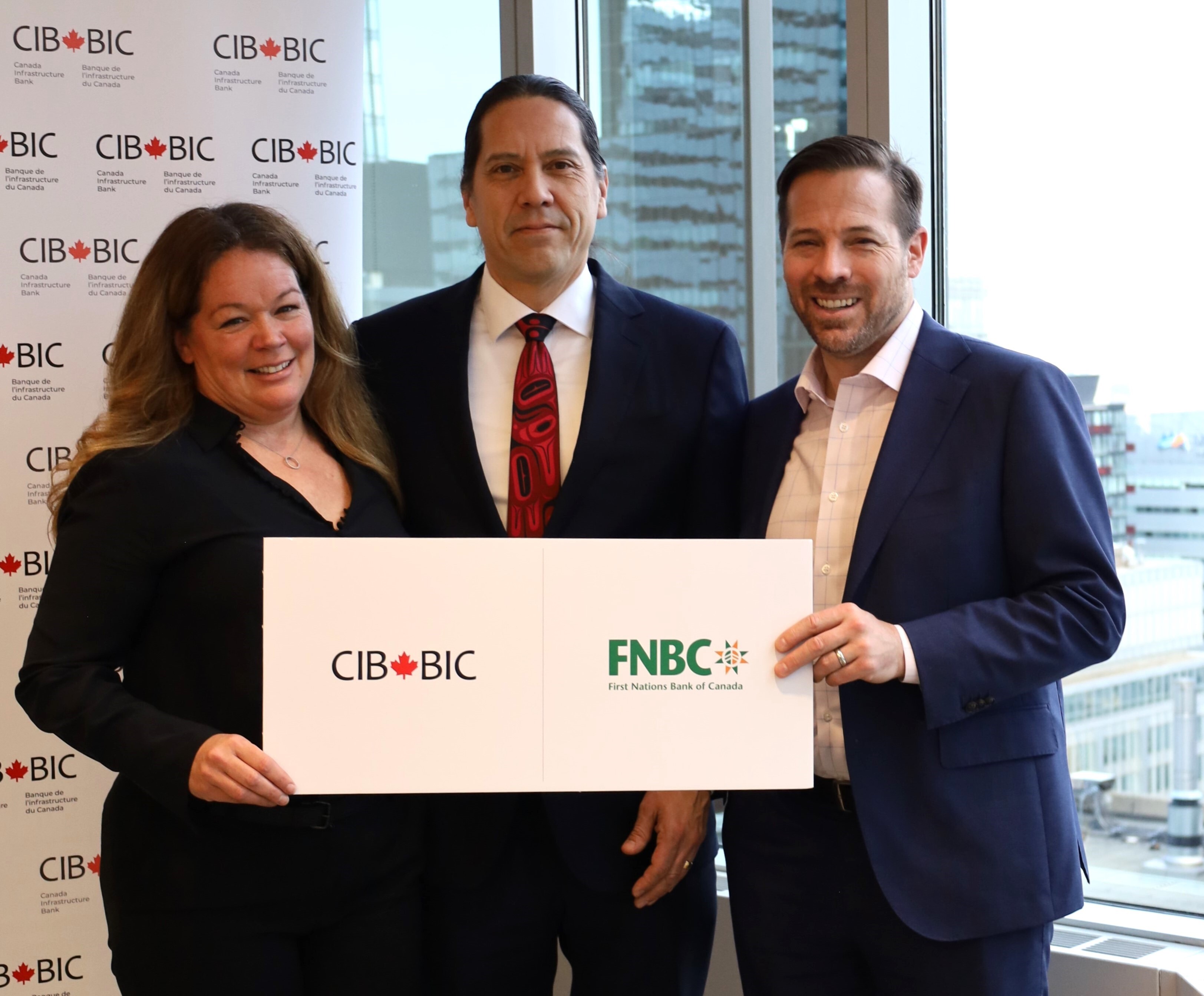
- Green Infrastructure
- Indigenous Infrastructure
First Nations Bank of Canada
- First-of-its-kind risk-sharing loan product with First Nations Bank of Canada
- Aggregator financing option for enabling infrastructure in Indigenous communities
- Includes site works, roadworks, water/wastewater facilities and utility connections
- First-of-its-kind risk-sharing loan product with First Nations Bank of Canada
- Aggregator financing option for enabling infrastructure in Indigenous communities
- Includes site works, roadworks, water/wastewater facilities and utility connections
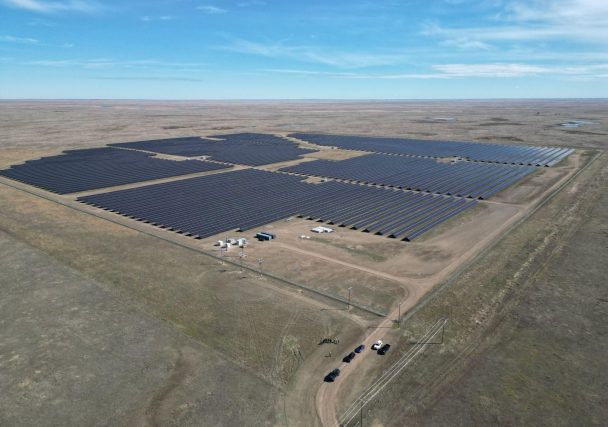
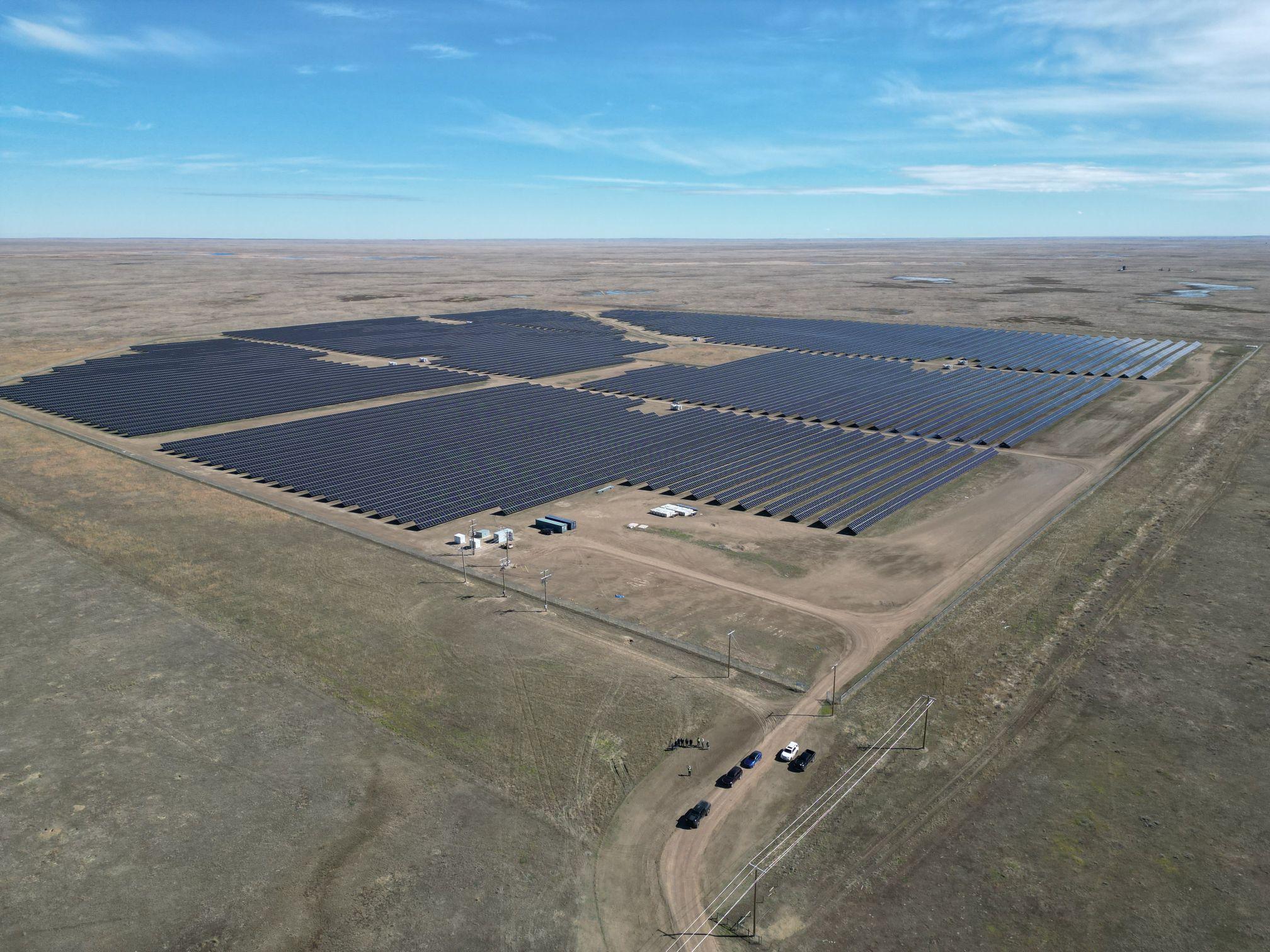
- Clean Power
- Indigenous Infrastructure
Tilley Solar
- Reduces greenhouse gas emissions by approximately 14,200 t/annually
- 69,450 fixed-tilt solar photovoltaic panels connected to Alberta’s electricity grid
- Generated more than 150 jobs during construction
- Reduces greenhouse gas emissions by approximately 14,200 t/annually
- 69,450 fixed-tilt solar photovoltaic panels connected to Alberta’s electricity grid
- Generated more than 150 jobs during construction


- Trade & Transportation
- Indigenous Infrastructure
Thompson Regional Airport
- Serving 15 remote Indigenous communities with limited transportation options
- Provides critical services to a catchment area, serving 65,000 people
- Long-term solution resilient to the impacts of climate change
- Serving 15 remote Indigenous communities with limited transportation options
- Provides critical services to a catchment area, serving 65,000 people
- Long-term solution resilient to the impacts of climate change


- Green Infrastructure
Azure Sustainable Fuels
- SAF are produced by Canadian agricultural products such as canola and soybean oil
- Production will help create new green jobs and support Canada’s agricultural sector
- Near-term solution to reduce the aviation industry’s carbon footprint without modifying existing aircraft engines or infrastructure
- SAF are produced by Canadian agricultural products such as canola and soybean oil
- Production will help create new green jobs and support Canada’s agricultural sector
- Near-term solution to reduce the aviation industry’s carbon footprint without modifying existing aircraft engines or infrastructure


- Public Transit
BC Ferries Island Class Electrification
- About 8,300 tonnes of greenhouse gas emissions saved annually
- Cleaner and quieter transportation option for Vancouver-area commuters and tourists
- Reduces passenger exposure to emissions from diesel ferries
- About 8,300 tonnes of greenhouse gas emissions saved annually
- Cleaner and quieter transportation option for Vancouver-area commuters and tourists
- Reduces passenger exposure to emissions from diesel ferries


- Green Infrastructure
Red-Seine-Rat Water and Wastewater
- Improves wastewater treatment and relieves capacity constraints
- Provides wastewater servicing to the equivalent of approximately 40,170 households
- Supports future development to the equivalent of approximately 17,400 new homes in RSR communities
- Improves wastewater treatment and relieves capacity constraints
- Provides wastewater servicing to the equivalent of approximately 40,170 households
- Supports future development to the equivalent of approximately 17,400 new homes in RSR communities


- Trade & Transportation
CANXPORT Logistics
- Facility will handle 6 million tonnes of cargo
- Project will improve and expand flow of exports, helping Canadian businesses to reach international markets
- Two local First Nations will receive significant benefits from project
- Facility will handle 6 million tonnes of cargo
- Project will improve and expand flow of exports, helping Canadian businesses to reach international markets
- Two local First Nations will receive significant benefits from project


- Green Infrastructure
CAPREIT Retrofits
- CAPREIT’s overall annual emissions to be cut 38%
- Deep energy and emissions reduction retrofits to improve the quality of living for residents
- CIB loan contains tenant protections that restrict rent increases
- CAPREIT’s overall annual emissions to be cut 38%
- Deep energy and emissions reduction retrofits to improve the quality of living for residents
- CIB loan contains tenant protections that restrict rent increases


- Green Infrastructure
Efficiency Capital Retrofits
- Reducing emissions in retrofitted buildings by a minimum of 30%
- Increasing the energy efficiency of small- to medium-sized buildings
- Investment repaid through energy savings generated by the retrofits
- Reducing emissions in retrofitted buildings by a minimum of 30%
- Increasing the energy efficiency of small- to medium-sized buildings
- Investment repaid through energy savings generated by the retrofits


- Green Infrastructure
Enbridge Sustain-Blackstone Retrofits
- Upgrades to buildings include on-site geothermal, solar and other renewables, coupled with battery storage.
- Universities, colleges and hospitals are among the customers to cut emissions by at least 30%.
- Upgrades to buildings include on-site geothermal, solar and other renewables, coupled with battery storage.
- Universities, colleges and hospitals are among the customers to cut emissions by at least 30%.


- Public Transit
Highland Electric Zero-Emission Buses
- About 5,500 tonnes of emissions saved annually
- Cleaner and quieter student transit
- Reduces students’ exposure to emissions from diesel buses
- About 5,500 tonnes of emissions saved annually
- Cleaner and quieter student transit
- Reduces students’ exposure to emissions from diesel buses


- Green Infrastructure
HTEC Hydrogen Production and Refuelling Infrastructure
- Promotes the adoption and deployment of fuel cell vehicles and low carbon transportation solutions
- Up to 20 hydrogen refuelling stations to be built in British Columbia and Alberta
- Estimated to generate more than 280 full-time jobs over the construction and operations phases
- Promotes the adoption and deployment of fuel cell vehicles and low carbon transportation solutions
- Up to 20 hydrogen refuelling stations to be built in British Columbia and Alberta
- Estimated to generate more than 280 full-time jobs over the construction and operations phases


- Green Infrastructure
KingSett Capital Retrofits
- Reduces 6,095 tonnes of emissions annually
- More than 4.8M square feet of space to be upgraded with low-emitting technologies
- Enhances building energy efficiency and energy cost savings
- Reduces 6,095 tonnes of emissions annually
- More than 4.8M square feet of space to be upgraded with low-emitting technologies
- Enhances building energy efficiency and energy cost savings


- Trade & Transportation
MET - Montreal Metropolitan Airport (YHU)
- Enhancing domestic transportation options to access the Montreal region
- Terminal capacity to support up to approximately four million passengers a year
- Located 15 kilometres from Montreal with modern terminal and nine gates
- Enhancing domestic transportation options to access the Montreal region
- Terminal capacity to support up to approximately four million passengers a year
- Located 15 kilometres from Montreal with modern terminal and nine gates


- Clean Power
Nova Scotia Energy Storage
- Energy storage is essential for Nova Scotia’s move towards more renewable electricity
- Reduce approximately 100,000 tonnes of emissions annually, supports renewable power generation and future needs
- 13 Mi’kmaw communities to partner with support from Indigenous equity loan
- Energy storage is essential for Nova Scotia’s move towards more renewable electricity
- Reduce approximately 100,000 tonnes of emissions annually, supports renewable power generation and future needs
- 13 Mi’kmaw communities to partner with support from Indigenous equity loan


- Green Infrastructure
Parkland EV Charging Network
- Sites across Canada to see new public fast charging infrastructure installed
- Alleviating range anxiety and supporting EV adoption
- Paves the way for the installation of up to 2,000 new fast charging ports
- Sites across Canada to see new public fast charging infrastructure installed
- Alleviating range anxiety and supporting EV adoption
- Paves the way for the installation of up to 2,000 new fast charging ports
Do you have infrastructure projects that we can help to accelerate?
CONTACT US
Investment proposals: investments@cib-bic.caCorporate: contact@cib-bic.ca
Media: media@cib-bic.ca




